If you’re new to the world of RVs, the term “gray water” may be unfamiliar to you. Gray water is simply wastewater that has been used in your sink, shower, and toilet. It’s important to understand what gray water is and how to properly dispose of it while camping, as improper disposal can lead to fines and health hazards. In this article, we will provide some useful tips for dealing with it while camping!
Table of Contents
What is Gray Water in an RV?
It does not include toilet waste water, which is considered black water. Most RVs have a holding tank for gray water, and when it gets full, you’ll need to empty it.
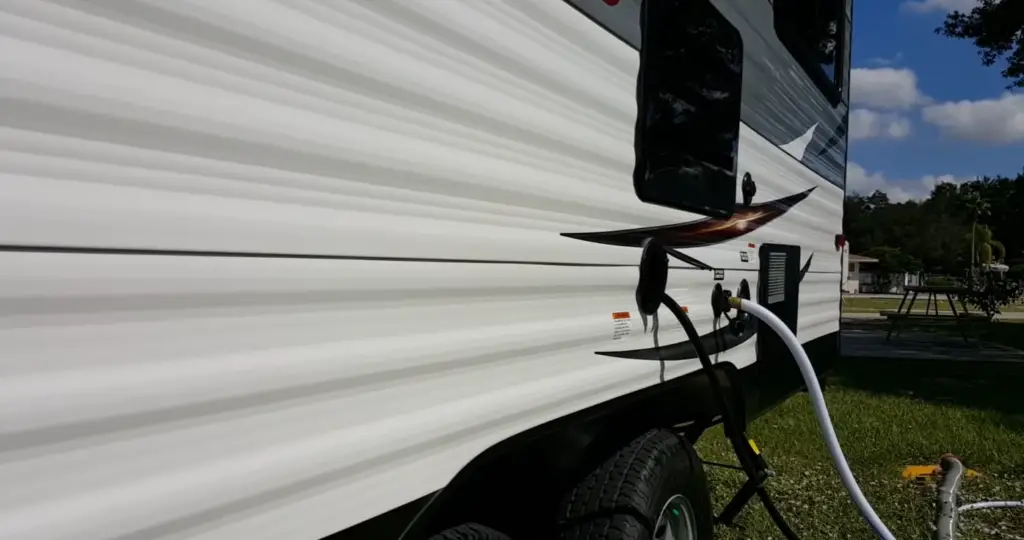
You can do this by hooking up to a dump station at an RV park or campground, or by using a portable tank that you empty into a regular household toilet. Some people also choose to recycle their gray water by using it to irrigate plants or wash their car.
Here are some common questions about gray water in RVs:
- How long does gray water last in an RV?
- What are some tips for storing gray water in an RV?
- How can I recycle gray water in my RV?
Gray water can last for a few days in an RV, but it is best to empty it as soon as possible. If you are using a portable tank, be sure to empty it before it gets full. You can store gray water in an RV by using a holding tank or a portable tank. Be sure to follow the manufacturer’s instructions for proper care and maintenance of your tanks. [1]
Understanding RV Gray Water
It doesn’t include sewage or black water (from the toilet), but it can contain pretty icky stuff all the same. That’s why you need to take care when handling and disposing of it.
The best way to dispose of gray water is to dump it at an approved dumping station. You can usually find these at campgrounds and RV parks. If there’s no dumping station available, you can discharge your gray water onto bare ground that is at least 200 ft away from any water source.
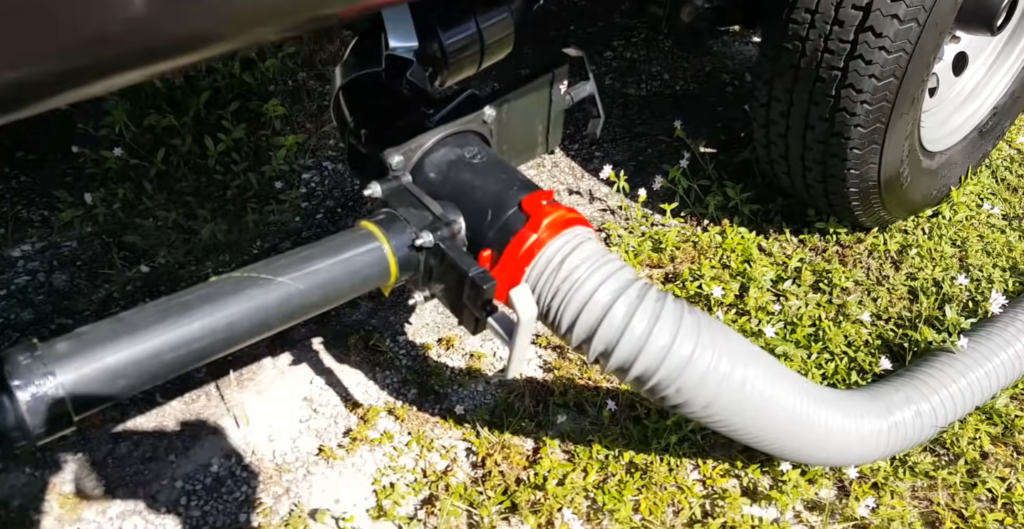
Here are some tips for dealing with gray water:
- Don’t let it sit in your RV for too long. The longer it sits, the more time bacteria has to grow.
- Don’t pour grease or oil down your drains. These can clog up your pipes and lead to problems down the road.
- Avoid using strong chemicals and cleaners whenever possible. Not only are they bad for the environment, but they can also damage your RV’s plumbing over time.
- Use biodegradable soaps and cleaners whenever possible. This will make it easier for both you and the environment.
Gray Water vs Black Water
RV gray water is the waste water from your sinks, showers, and washing machine. Black water, on the other hand, is the sewage from your toilets. Both types of waste need to be disposed of properly to avoid contamination and odor problems.
Most RV parks have designated dump stations for black water only. That’s because it’s much more difficult to treat than gray water. If you’re not sure where to dump your black water, ask a park ranger or look for signs posted near the dump station.
Gray water can usually be dumped anywhere since it doesn’t contain human waste. However, some states have restrictions on how close you can dump gray water to natural bodies of water like lakes and streams. Again, check with your local regulations to be sure. [2]
If you’re boondocking (camping without hookups), you’ll need to be extra careful with your waste water. That’s because you won’t have a dump station nearby to dispose of it. In this case, it’s best to hold onto your black water until you can find a proper disposal facility. As for gray water, you can usually just dump it on the ground. Just be sure to do it at least 200 feet away from any natural bodies of water.
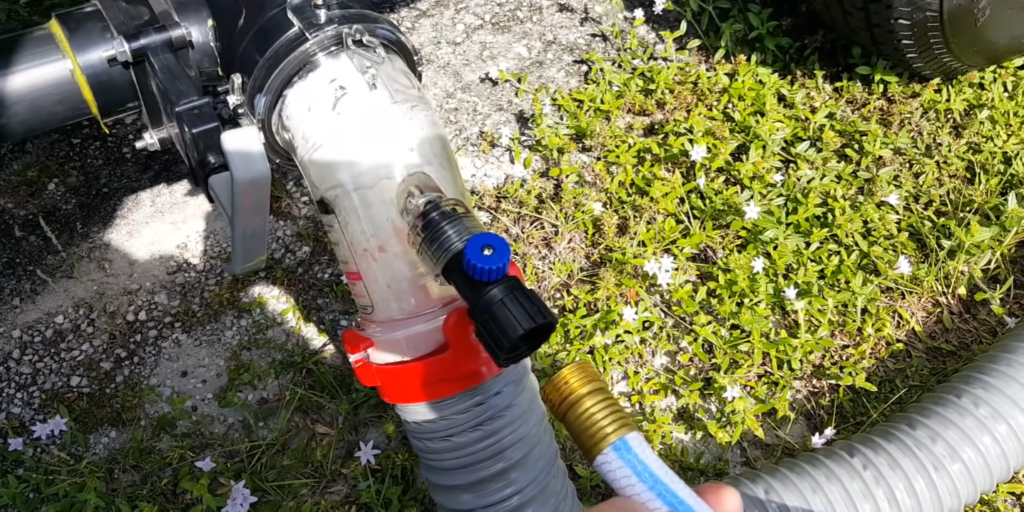
How to Empty Your RV Gray Water Tank
Emptying the RV gray water tank is simple and easy to do. All you need is a standard garden hose and a safe place to dump the contents of your tank. Here are the steps you need to follow:
- First, find a safe place to dump your gray water. This could be a public dumping station, or even your own home’s sewer cleanout if it’s readily accessible.
- Next, attach your garden hose to the RV’s gray water outlet. If you don’t have a dedicated gray water outlet, you can also use the fresh water outlet.
- Open the valve on your gray water tank and let the contents empty into the chosen dumping location.
- Once the tank is empty, close the valve and disconnect the hose.
- Give the tank a good rinse with clean water to remove any residue. [3]
While dumping your gray water may not be the most glamorous task, it’s important to do it regularly to avoid any issues. And following these simple steps will make the process quick and easy.
Gray Water Tank Treatment & Maintenance
If you are using your RV frequently, then you need to pay attention to your gray water tank. Here are some tips on how to keep it clean and well-maintained:
- Make sure that you are emptying your gray water tank regularly. Depending on the size of your tank and how often you use your RV, this could be anywhere from once a week to once a month.
- Use gray water treatments like enzymes or bacteria packets to help break down solids and prevent odors.
- Never put anything in your gray water tank that could clog the drain lines, including grease, coffee grinds, or eggshells.
- Avoid using harsh chemicals like bleach when cleaning out your gray water tank. A mixture of vinegar and water is a much safer option. following these simple tips will help you keep your gray water tank clean and functioning properly.
Cleaning The Gray Water Tank
The first thing you need to do is clean the gray water tank. You can do this by using a hose and some bleach. Make sure you rinse the tank thoroughly before you use it again.
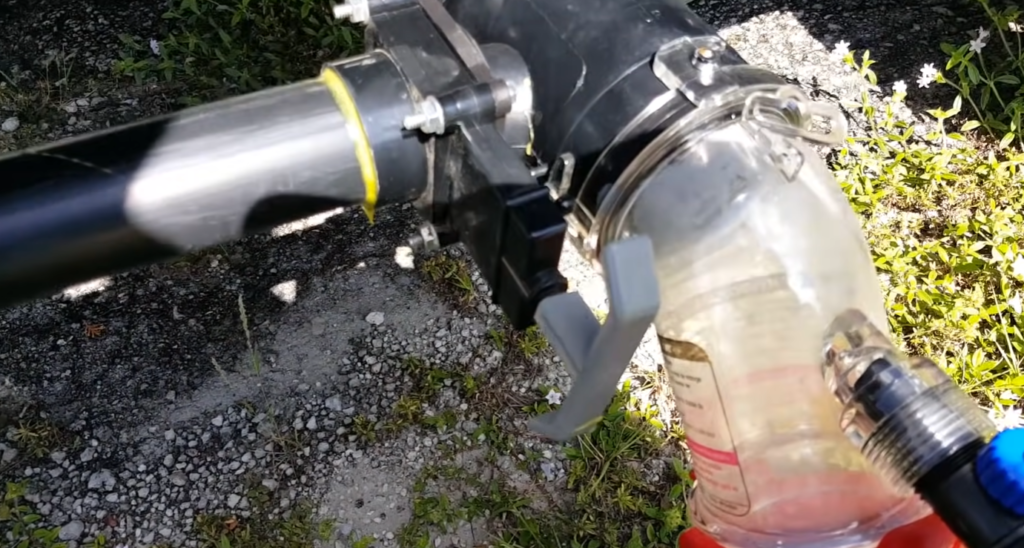
Gray water tanks can get pretty dirty, so it’s important to clean them regularly. If you don’t, they can start to smell bad and attract bugs.
To clean your gray water tank, you’ll need:
- A hose
- Bleach
- A bucket
- Gloves (optional)
Here’s how to do it:
- Pour a cup of bleach into the tank and fill it up with water. Let it sit for an hour or so.
- Drain the tank and rinse it out several times.
- Fill the tank up with clean water and let it sit for a few hours to make sure all the bleach is gone.
- Drain the tank again and rinse it one more time.
Now your gray water tank is clean and ready to use!
Storing The Gray Water Hose
Most RV parks have a dump station where you can empty your gray and black tanks, but what about when you’re boondocking? When there’s no hookup available, you’ll need to store your gray water somewhere on your property. The best way to do this is by using a gray water hose.
It’s important to use a separate hose for your gray water because it will contain soap and other chemicals that could be harmful to plants or animals if they’re allowed to seep into the ground.
When choosing a location for your Gray Water Storage Tank, make sure it’s at least 100 feet away from any water sources, such as lakes, streams, or wells. You should also avoid placing it near any areas where people or animals congregate, such as playgrounds or picnic areas.
Once you’ve chosen a location, dig a hole that’s large enough to accommodate the size of your tank. Then, place the tank in the hole and cover it with a lid to keep out debris and insects. Finally, connect your gray water hose to the tank and run it to your RV so that all of your gray water will be stored in one place.
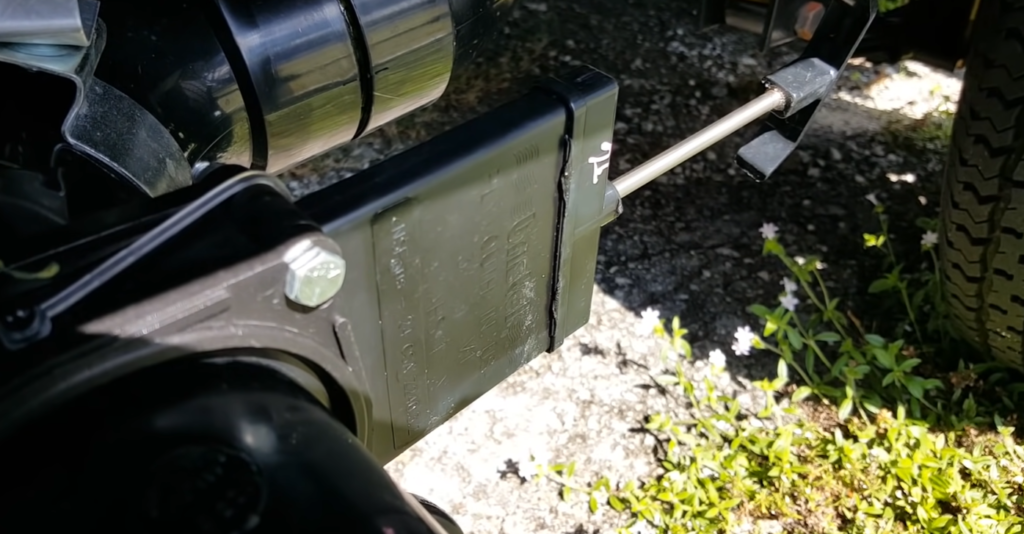
Gray water can be stored in an above-ground tank or below-ground pit. The most important thing is to make sure it is properly drained so that no standing water is present which could create an odor problem or attract insects.
If you are storing your gray water in an above-ground tank, it is important to keep the tank full so that there is no air space for smells to develop. You can add a small amount of bleach to the water to help control any odors. It is also a good idea to have a vent installed near the top of the tank so that any gasses can escape.
Below-ground pits are generally used for long-term storage of gray water. The pit should be lined with gravel and have a drain pipe leading away from it to prevent any standing water from accumulating. Again, adding a small amount of bleach to the water will help control odors. [4]
Storing gray water in an RV is a great way to be more self-sufficient and avoid having to pay for hookups at campgrounds. By following these tips, you can make sure that your gray water is stored properly and doesn’t become a nuisance.
Tank maintenance tips
If you have an RV with a gray water tank, it’s important to keep it properly maintained. Here are some tips:
- Regularly clean the sensors that measure the level of liquid in your tank. Gray water can build up and block these sensors, causing inaccurate readings.
- Empty your tank frequently. Depending on how much water you use, you may need to empty it as often as once a week.
- If you notice any leaks, repair them immediately. Leaks can lead to costly repairs down the road.
FAQ
What happens when gray water is full?
If your gray water tank is full, you will need to empty it before continuing to use your RV. You can do this by finding a dumping station and hooking up your RV to empty the tank. Many campgrounds have dumping stations that you can use for this purpose.
If you are unsure of where the nearest one is, you can always ask a campground ranger or another RV owner for help.
Dumping is not difficult, but it is important to do it on a regular basis so that your RV doesn’t start to smell bad. Gray water is a breeding ground for germs and can accumulate over time since it contains all of the RV’s wastewater. [5]
There are always instructions in your RV’s owner’s manual. You can also ask a campground ranger or another RV owner for help.
Should I leave water in my gray tank?
It’s recommended that you keep at least some water in your gray tank. This will help to prevent odors and clogs, and will make it easier to clean out the tank when necessary. Of course, you’ll need to be careful not to overfill the tank, or you may end up with a messy situation on your hands!
If you’re planning to be away from your RV for an extended period of time, you may want to consider emptying out the tank. This will help to prevent any problems with freezing or overflowing. Be sure to consult your owner’s manual for specific instructions on how to do this safely. [6]
Does the gray water tank drain into the black water tank?
No, the gray water tank drains separately. The black water tank contains sewage and other waste, while the gray water tank stores shower and sink water. It’s important to keep these two tanks separate to avoid contamination.
Gray water can be used for watering plants or flushing toilets, but it should not be used for drinking or cooking. If you need to use it for drinking or cooking, you should boil it first. Boiling will kill bacteria that may be present in the water. [7]
Depending on how much you use your RV, you may need to empty it every few days or once a week. When you’re ready to empty the tank, you’ll need to find a dump station. Most campgrounds have dump stations that you can use for a small fee.
How do I empty my gray water tank?
The most common way to empty is by using a hose. Most RVs have a dedicated gray water drain hose that can be connected to an external faucet or spigot. Once the hose is connected, open the gray water valve and allow the tank to empty.
It’s important to make sure that the gray water hose is properly secured so that there are no leaks. You may also want to put down some sort of mat or tarp underneath the RV while it’s draining, just in case any spills occur. After the tank is emptied, close the valve and disconnect the hose.
Another way is by using what’s known as a dump station. Dump stations are typically found at campgrounds and RV parks, and they’re basically just large tanks that RVs can empty their gray water into.
To use a dump station, simply back the RV up to the tank and connect a hose from the gray water outlet to the inlet on the dump station. Open the valve and allow the gray water to flow into the tank. When you’re finished, close the valve and disconnect the hose.
Gray water can also be emptied into an approved septic system. This is usually only done if there’s no other way to dispose of it, as it can put strain on a septic system that wasn’t designed to handle such large volumes of waste water.
What’s the difference between gray water and black water?
The main difference is that gray water comes from sources that are not contaminated with feces. That means it’s generally safe to reuse gray water for things like watering plants or flushing toilets. Black water, on the other hand, comes from contaminated sources like toilets and needs to be disposed of properly to avoid spreading disease.
So what exactly counts as gray water? Here are a few examples:
- Water from your shower or bathtub
- Water from your sink (not including water that’s been used to wash raw meat)
- Water from your washing machine [8]
As you can see, gray water can come from a variety of sources. And while it’s not safe to drink, gray water can be reused in other ways.
What are some best practices for dumping?
Here are some tips:
- Dump the gray water at an approved dumping station. This is to ensure that the water does not contaminate any nearby areas.
- If you must dump in a non-approved area, do so at least 200 ft away from any bodies of water (lakes, rivers, etc.).
- Be sure to empty all tanks completely before moving your RV. This will prevent any spills or leaks while in transit.
Following these simple tips will help keep our environment clean and safe for everyone!
Useful Video: How to Empty the Black & Grey Tanks in an RV/Camper
Conclusion
Gray water is one of those things that many people don’t think about until they have a problem with it. We hope you enjoyed our comprehensive guide to gray water in RVs. As you can see, it’s not as complicated as it seems. With a little knowledge and preparation, you can easily manage the RV’s gray water. And, as always, if you have any questions or need help troubleshooting, don’t hesitate to contact a qualified RV technician. Happy travels!
References
- https://trailervalet.com/rv-grey-water-tank-guide/
- https://www.clearwell.se/news-media/whats-the-difference-between-blackwater-and-greywater
- https://vehq.com/how-to-drain-gray-water-tank-on-rv/
- https://www.etrailer.com/faq-clean-rv-gray-tank-in-5-easy-steps.aspx
- https://thecampingadvisor.com/what-happens-when-grey-water-tank-is-full/
- https://www.thervgeeks.com/rv-gray-tank-open-or-closed/
- https://rvshare.com/blog/rv-grey-water-tank/
- https://theconstructor.org/question/what-is-the-difference-between-gray-water-and-black-water-in-sewers/

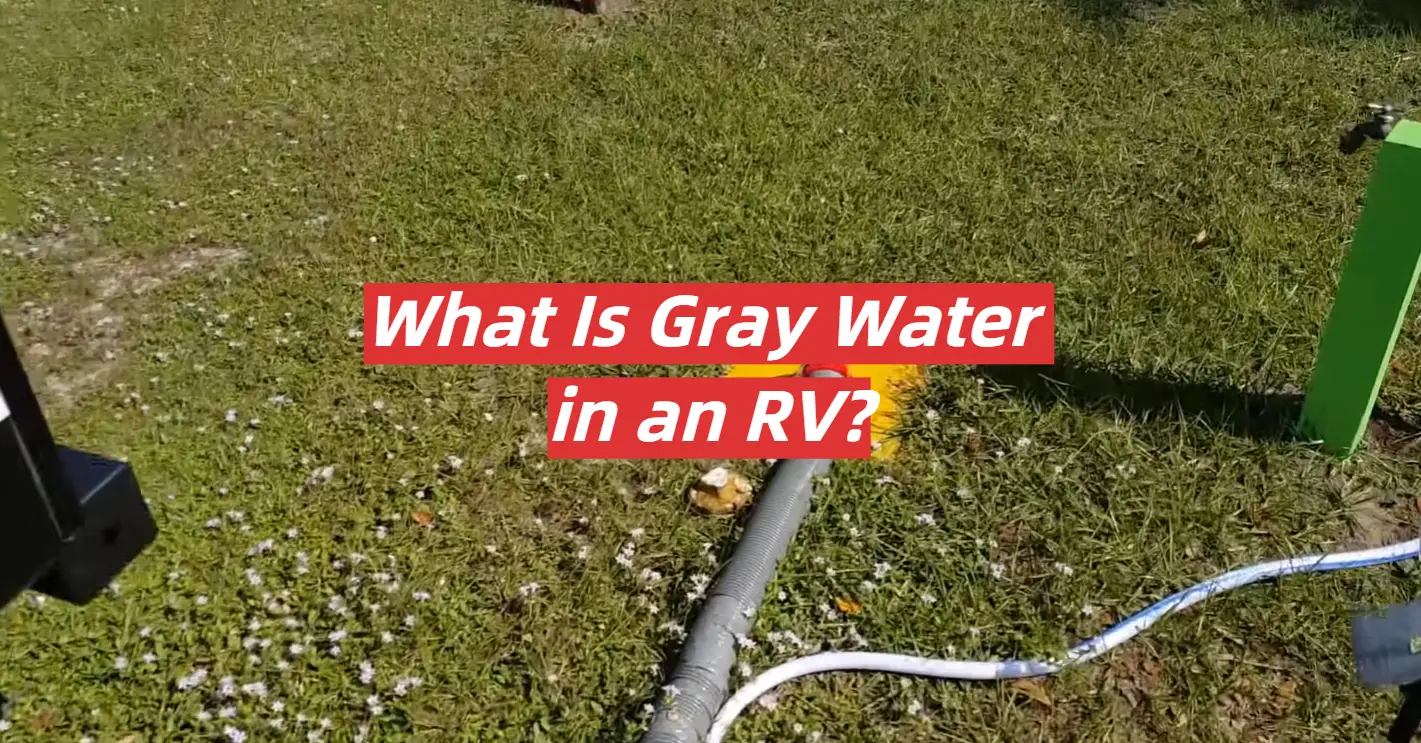




Leave a Reply